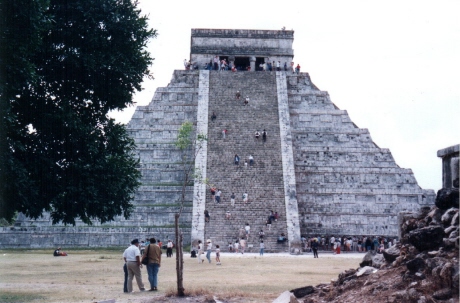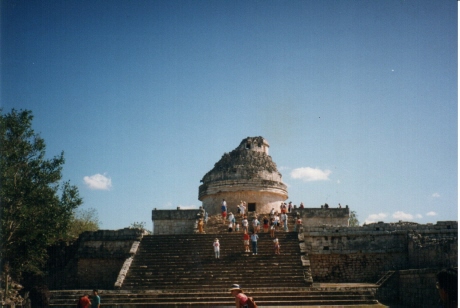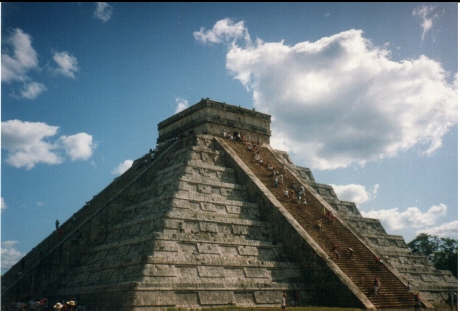 |

 |
 |

 |

DIVERSITY OF FIRST NATION CIVILIZATIONS
Prior to the onset of the full-fledged European invasion, the Americas were home to city dwellers, semi nomads, nomads, farmers, fishermen and so on. These are the names of a few of the First Nations that then prospered: Mi'kmaq, Maliseet, Mohawk, Aztec, Inca, Maya, Cherokee, Blood, Cree, Sioux.

European apologists like to state that the two continents were sparsely populated when the invasion began. This contention flies in the face of the fact that First Nations Peoples occupied them from the Arctic to the southern most tip of South America.

Apologists should ask themselves this question: “If there was so much vacant space, why did some of the indigenous peoples live in harsh environments such as deserts, swamps, mountains, jungles and so on, when they could have lived in much more hospitable “uninhabited” parts of the Americas? They might be able, with some effort, to grasp that they did so because the most hospitable lands were already taken.

"We also spent an afternoon exploring the magnificent pyramids of Monte Alban, an ancient Zapotec city-state on the out-skirts of Oaxaca. At its zenith, around 500 AD, the city-state supported 30,000 inhabitants. It was humbling to realize that we knew more about the ancient Greeks and Romans than the extraordinary civilizations of the Americas."
Caral was inhabited between roughly 3000 BC and 1600 BC, enclosing an area of 66 hectares. Caral has been described by its excavators as the oldest urban center in the Americas, accommodating more than 3,000 inhabitants and forming the center of a Caral Supe Civilization, spread over several settlements along the Peruvian coast.
The Caral pyramids date from as early as the 27th century BC. Their construction is thought to have continued until the 21st century BC, making their age comparable to that of the Great Pyramid of Khufu in Egypt, built between 2600 and 2480 BC.
To read more Click: "Caral - Wikipedia, the free encyclopedia"
I've often asked - Why do the scholars of the Americas study ancient Greek and Roman civilizations when there are so many ancient civilizations to be studied in the Americas? Is it a deliberate attempt by the powers that be to perpetuate the false widely held perception that there were no viable civilizations in the Americas prior to 1492, just two Continents inhabited by wild bloodthirsty savages?
At the suggestion of my good friend Bernie Francis, I visited Sites describing the ancient Maya City of Calakmul, Campeche, a UNESCO World Heritage Site: Here are a few to get you started:
"Calakmul - Wikipedia, the free encyclopedia "
Click to read about American Indian Genocide